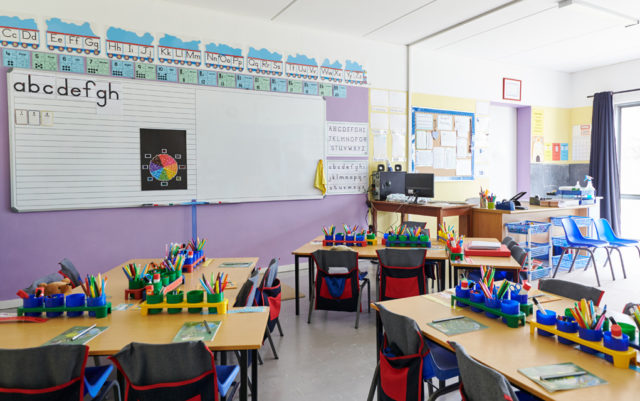
Colorado students entering 10th grade in the fall will never have been in a fully funded public school classroom.
After recent cuts at the state legislature to stabilize the budget, it’s likely those students will eventually graduate having never sat in a classroom that received all the funding resources they require.
In the face of a $3 billion deficit, the state legislature made budget cuts across the board last month. As K-12 funding represents roughly one-third of the state’s general fund expenditures, it received the bulk of the cuts — $577 million in 2020, with the potential to exceed $1.18 billion in cuts by 2022.
Already, Colorado ranks 49th in the country for teacher pay. But the ramifications of these funding cuts extends far beyond educator compensation, says Amie Baca-Oehlert, a high school counselor and president of the Colorado Education Association, the state’s teachers’ union.
“I think all we have to do is look to the very recent past to see the consequences of what that kind of funding reduction means,” Baca-Oehlert says. “More that half our schools in Colorado are on a four-day week. We have students sit in class sizes that are much too large. We have students that don’t have access to mental health support. We have one of the highest youth suicide rates in the country. We have one of the largest educator shortages that we’ve ever experienced.”
Complicating matters is (of course) the coronavirus pandemic, which shuttered schools in March for the remainder of the academic year, and forced educators and students to adapt on the fly. Still, the shutdowns highlighted inequities in Colorado’s education system that years of underfunding had helped create: many students didn’t have access to technology, some parents who worked essential jobs weren’t home to guide their children through remote learning, and some didn’t have adequate access to specialty or mental health care.
Those challenges will be present when the next school year starts in the fall, Baca-Oehlert says, and will only be exacerbated by the reduced budget.
“The fact is our students are going to be going back to school with significant needs,” she says, “We know our students are going to need more resources, and our funding has been cut to a point where there’s going to be less resources.”
CEA lobbied lawmakers at the end of the recent legislative session to make changes that would boost education spending, like reducing or redirecting the amount spent on standardized testing and “costly” evaluation systems into avenues that support educators better. Last year, the state spent $23 million on standardized testing, with much of the money going to private testing companies, Baca-Oehlert says.
CEA also lobbied for cutting corporate tax loopholes, which would allow more funds to flow to the education system. That resulted in a bill that ultimately passed but, after opposition from business groups, was limited to $100 million in funds redirected to education over several years — much less than was anticipated by education advocates.
There is also some relief in federal CARES Act funding, at least this year, with $510 million going to K-12 spending in Colorado.
Come November, education advocates will also try their hands at the ballot box again. Initiative 271 is currently circulating for signatures and would tax high earners more, with 50% of the revenue going to K-12 schools. But if the initiative is anything like others that sought to raise funds for education in Colorado, it’s got a long shot at passing.
“My greatest hope is that Coloradans see the need and that they will prioritize what I consider our greatest resource: our students, our children, our future,” Baca-Oehlert says. “Why voters have not prioritized this in the past, that’s tough question. All we can do is hope voters see the reality [now].”














